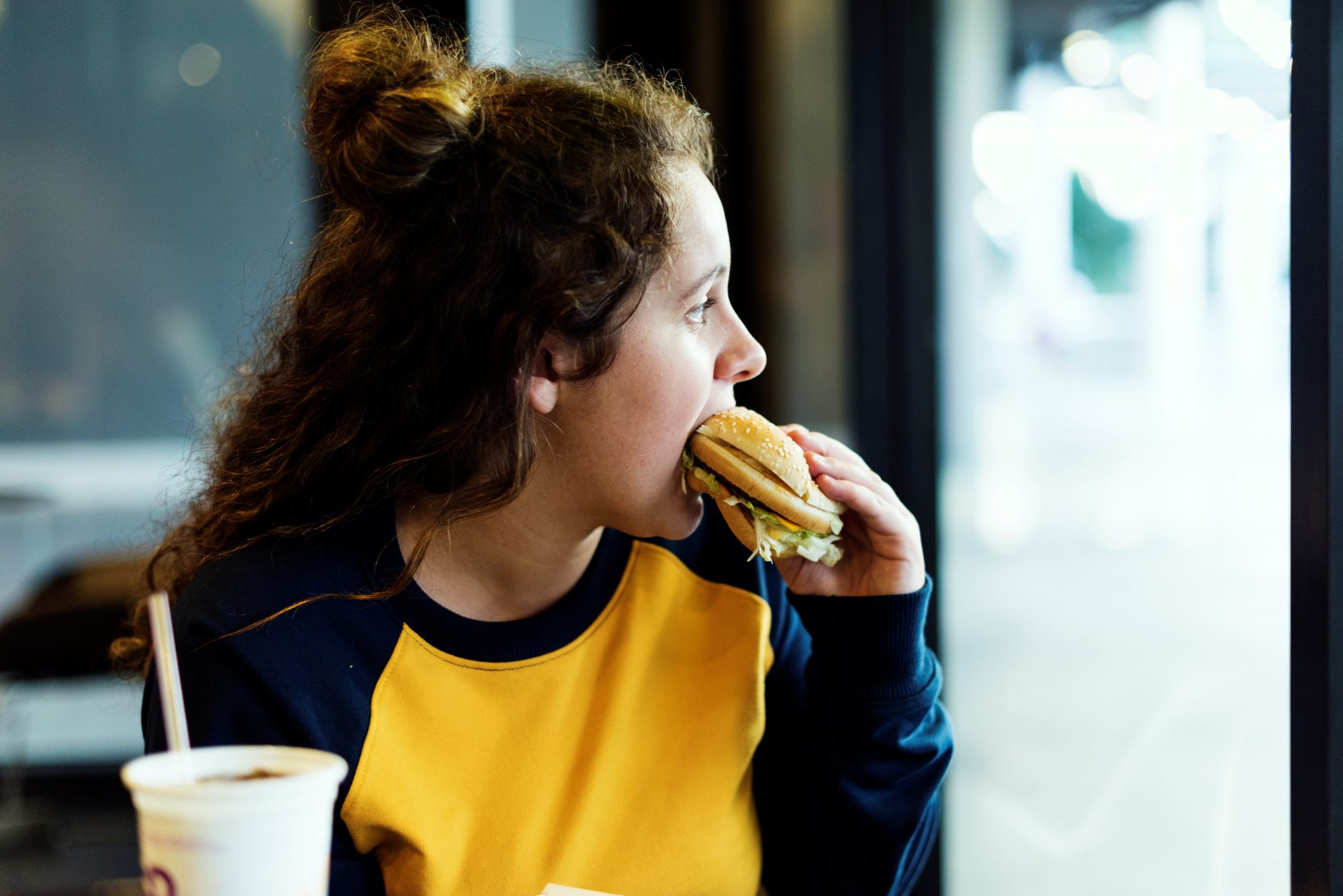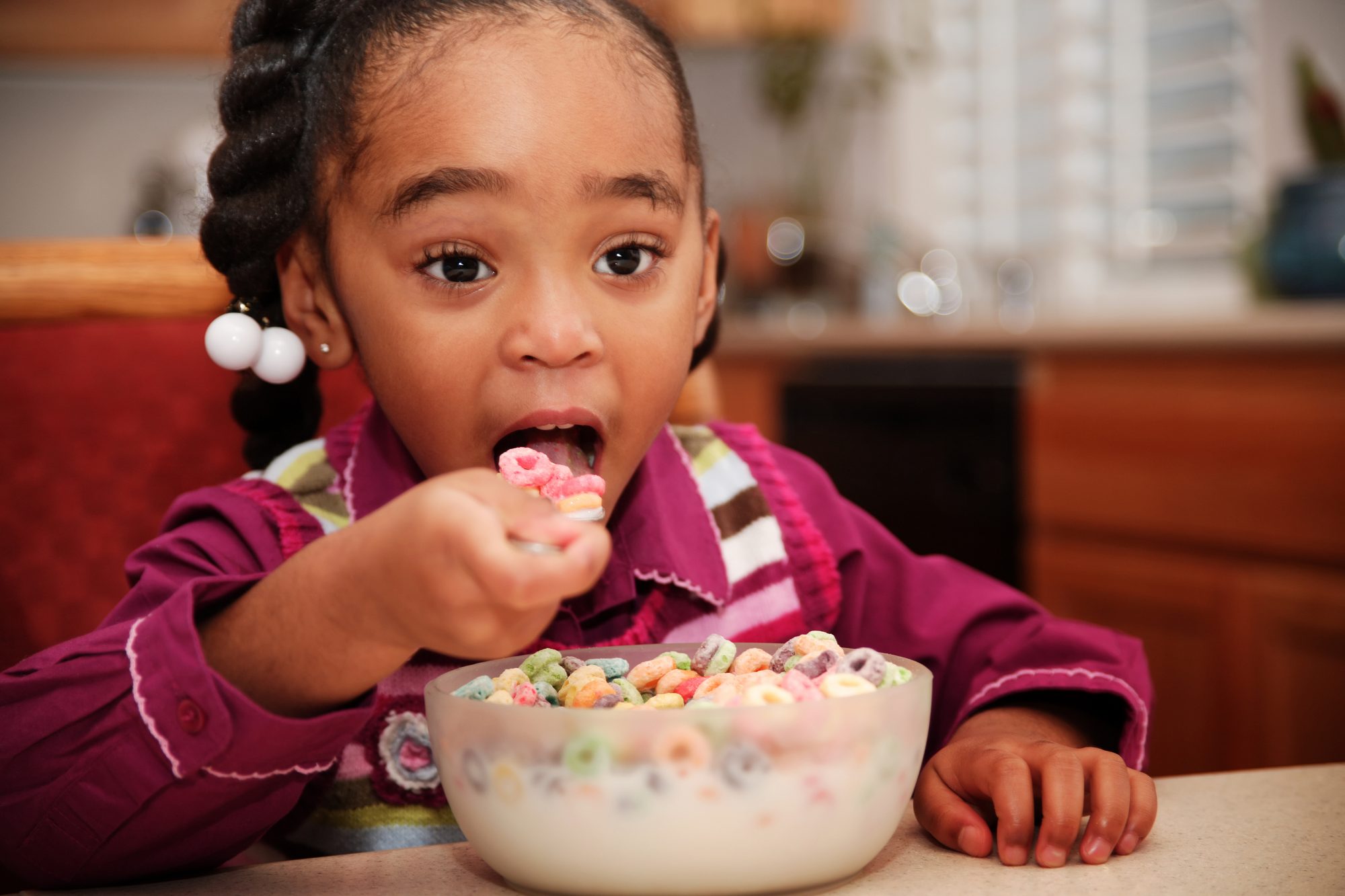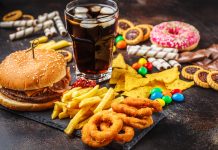If we want to improve health, and reduce sweet and processed foods, we need to start with child nutrition and change the foods and drinks sold to infants and young children
The government has released 14 obesity related strategies since 1992, containing almost 700 policies, yet they have had little success with many not having been fully implemented. Policies that have been put in place have largely focused on individual behaviour change, such as the launch of the Change4Life campaign (now known as BetterHealth).
Whilst policies such as these are important, it is not enough to place sole responsibility on individuals whilst ignoring our external environment that has been designed to encourage us to purchase unhealthy foods and drinks.
Our environment has a greater impact on what we eat than many may think. From the products that are marketed to us in the street, on the TV and in store, to the products on promotion, where they are placed in store and what’s available to us.
It’s no wonder that marketing degrees are often joined up with psychology – it helps the marketers understand consumer behaviour and what encourages us to buy a product.
Of the few proposed policies that would positively impact our environment, some have been implemented, including place promotion restrictions, whilst others have been largely delayed including the 9pm watershed.
However, something key has been excluded in amongst all these policies: Infant and young children’s (≤36months) foods and drinks.
Child nutrition is the missing puzzle piece in obesity strategies
Infancy is one of the most crucial times in developing food preferences and dietary patterns, and child nutrition is likely to affect them in later life, impacting their future diet and disease risk.
More than 1 in 4 children start school already living with overweight and obesity, with cases of type 2 diabetes, asthma and high blood pressure increasing in children and tooth decay being the leading cause of hospital admissions for children.
There is a lack of clear child nutrition, labelling and marketing guidelines in products aimed at infants and young children, with limited composition guidelines within the EU Commission Directive 2006/125/EC.
In 2019, the now dissolved Public Health England (PHE) published evidence and opportunities for action in infant and young children’s foods and drinks, followed by a closed consultation on commercial baby food and drink guidelines in 2020, meaning only set organisations selected by the government were able to reply to it.
Our recent freedom of information request regarding these guidelines highlighted an imbalance among the stakeholders asked, with mostly food and drink companies invited, limited NGOs, and only one registered nutritionist.
The evidence and guidelines identified the need for, and set out recommendations on, the amount of sugar and salt that should be used in these products, alongside marketing and labelling suggestions on the use of health claims, use of fruit and vegetables and portion sizes.
However, in spite of the consultation suggesting these guidelines should be achieved by 2023, they have yet to be finalised and released.

Commercial baby foods and drinks contribute to unhealthy diets
Current sugar recommendations for infants and young children state sugars should not be added to baby foods or drinks, sugary food and drinks should be limited and not provided between meals, and infants aged ≥2years should consume no more than 5% energy intake from free sugars.
Free sugars are the sugars added by the food industry or sugars naturally present in fruit and vegetable juices, concentrates, smoothies, purees, pastes, powders and extruded fruit and vegetable products .
Unfortunately, infant and young children’s diets and products marketed to them do not reflect this advice. Research in this area has shown many commercial products are unsuitably and unnecessarily high in sugar.
In 2020, we conducted a survey on fruit snacks, with the highest product being marketed as suitable for infants aged 12+ months, with 70g total sugars per 100g, and 8.3g total sugars per serve, a third of an adult’s maximum free sugar recommendation, and having increased by 9.4g per 100g since 2015.
92% sweet snacks, such as fruit-based bars or oat bars, were found to be either high or medium in sugars
In the following years, we found 92% sweet snacks, such as fruit-based bars or oat bars, and 80% breakfast products, such as porridge or ambient yogurts, marketed as suitable for infants and young children, were found to be either high or medium in sugars using the front of pack traffic light labelling definition.
This is based on an adult’s recommendation of 90g total sugars a day. Taking into account the recommendations laid out above, no product advertised as suitable for an infant or young child should be able to be defined as medium or high in sugars for a child, let alone an adult.
Why is so much more sugar put into child food than adult food?
Our most recent data has shown a wide variation of total sugars within different categories of infant and young children’s foods and drinks, with the largest range found containing up to a 64g difference in sugars content in processed fruit snack products.
The results from this survey, alongside previous surveys, reveal the clear ability the baby food industry has to reformulate, reducing their total, and free, sugars content. Examples of the ranges include:
- Process Fruit Snacks – 63.6g difference per 100g
- Fruit Bar Snacks – 51.0g difference per 100g
- Hard Backed Snacks – 26.5g per 100g
It is therefore no surprise that the National Diet and Nutrition Survey data shows children are consuming more free sugars than recommended, drastically affecting child nutrition.
Children aged 4-6 months are already consuming 4.3% free sugars, with the majority coming from commercial baby foods, particularly fruit and cereal based foods and dishes.
By the time they are 7-11month olds they are consuming 6.2% free sugars and at 1.5-3 years they are already consuming 11.3% free sugars of their total energy intake, with just 13% meeting the government free sugars recommendation.
It is clear from this, and the research into the nutritional composition of these products, that there are unsuitable commercial baby food and drink products on the market that contain added sugar or ingredients that are high in sugar.

Health and child nutrition claims: Buy this product!
In addition to the high sugars content of many of these products, many use nutrition and health claims to market their food and drink, which mislead parents into overestimating the healthiness of the product.
The World Health Organization states: “Promotional claims idealize the product, imply that it is better than family foods, and mask the risks. Promotional claims put unprocessed family foods at a disadvantage.”
“Promotional claims idealize the product”
Our research on fruit snacks in 2020 found all products featured claims that would imply they were healthy, with the same results in the 2021 survey on baby and toddler sweet snacks despite, as previously mentioned, 37% being classified as high in sugar.
The product with the highest sugar content, at 8.7g/serve and marketed for 7+ months, used on pack claims relating to added vitamins and minerals and use of baby grade ingredients, despite also containing added sugar.
Our research on baby and toddler breakfast items found over three quarters displayed a ‘no added sugar’ or ‘naturally occurring sugars’ claim on pack. Legally, manufacturers can use such claims under the EU Regulation (EC) 1924/2006, which excludes sugars found naturally occurring in processed fruit or vegetables in their definition of added sugars.
Concerning considering the use of these claims are often on products that do contain added free sugars in the form of processed fruit, causing confusion and misleading parents on child nutrition.
How do we improve child nutrition through marketing?
Considering the range of policies, regulations and recommendations currently in place in our food system, it is concerning that there are no guidelines controlling the levels of salt and sugar in foods and drinks marketed to infants and young children.
Action on Sugar alongside 16 infant, children and health organisations called for the Health Secretary, Steve Barclay, to release the Commercial Baby Food and Drink Guidelines in a recent open letter.
In addition to this, three leading baby food companies signed a separate open letter also calling for the release of the guidelines in order to create a level-playing field and improve child nutrition.
Learning from the outcomes of existing policies such as the voluntary sugar and salt reformulation programmes, in comparison to the mandatory soft drinks industry levy, it is clear that mandatory measures are more effective at inciting change with child nutrition.
Therefore, to be effective, the government must release stringent mandatory guidelines urgently, alongside a consultation on appropriate marketing and labelling on infant and young children’s foods and drinks.
If we want to improve health, normalise less sweet, salty and processed foods, we need to start at the beginning with the foods and drinks sold to infants and young children.
References
- Is Obesity Policy in England Fit for Purpose? Analysis of Government Strategies and Policies, 1992-2020, Dolly Theis, https://onlinelibrary.wiley.com/doi/10.1111/1468-0009.12498
- Foods and drinks aimed at infants and young children: evidence and opportunities for action, 2019, https://assets.publishing.service.gov.uk/government/uploads/system/uploads/attachment_data/file/812204/Foods_and_drinks_aimed_at_infants_and_young_children_June_2019.pdf
- National Child Measurement Programme 2022:information for schools https://www.gov.uk/government/publications/national-child-measurement-programme-operational-guidance/national-child-measurement-programme-2022-information-for-schools
- Nutrition and obesity, RCPCH https://www.rcpch.ac.uk/key-topics/nutrition-obesity
- Decay going unchallenged as no. 1 reason for child hospital admissions, BDA https://bda.org/news-centre/press-releases/Pages/Decay-going-unchallenged-as-no-1-reason-for-child-hospital-admissions.aspx#:~:text=While%20numbers%20remain%20well%20below,that%20of%20those%20living%20in
- Commission Directive 2006/125/EC of 5 December 2006 on processed cereal-based foods and baby foods for infants and young children https://eur-lex.europa.eu/legal-content/EN/ALL/?uri=CELEX:32006L0125
- Draft proposals: Commercial baby food and drink guidelines http://www.babymilkaction.org/wp-content/uploads/2020/11/DRAFT-PHE-proposals-for-2023-commercial-baby-food-and-drink-guidelines.pdf
- A definition of free sugars for the UK https://www.ncbi.nlm.nih.gov/pmc/articles/PMC5962881/
- Experts call for honest labelling on so-called ‘healthy fruit snacks loaded with sugar and misleading claims https://www.actiononsugar.org/surveys/2020/fruit-snacks-/#d.en.845344
- Baby & Toddler Sweet Snacks, https://www.actiononsugar.org/surveys/2021/baby–toddler-sweet-snacks/
- Baby & Toddler Breakfasts, 2023 https://www.actiononsugar.org/media/actiononsugar/sugar-awareness-week/2022/Sugar-Awareness-Week-Report—Baby-&-Toddler-Breakfasts.pdf
- Guide to creating a front of pack (FoP) nutrition label for pre-packed products sold through retail outlets, 2016 https://www.food.gov.uk/sites/default/files/media/document/fop-guidance_0.pdf
- Leading health organisations call for the health secretary to release commercial baby food & drink guidelines, 2023 http://nonsugar.org/news-centre/sugar-in-the-news/2023/2023-news-stories/leading-health-organisations-call-for-the-health-secretary-to-release—-commercial-baby-food–drink-guidelines–.html
- World Health Organisation. 2017. Guidance on ending the inappropriate promotion of foods for infants and children. Implementation Manual. https://apps.who.int/iris/bitstream/handle/10665/260137/9789241513470-eng.pdf
- https://food.ec.europa.eu/safety/labelling-and-nutrition/nutrition-and-health-claims/nutrition-claims_en
- Leading health organisations call for the health secretary to release commercial baby food & drink guidelines https://www.actiononsugar.org/news-centre/sugar-in-the-news/2023/2023-news-stories/leading-health-organisations-call-for-the-health-secretary-to-release—-commercial-baby-food–drink-guidelines–.html
- Sugar reduction – industry progress 2015 to 2020. Including the final report for foods included in the latest data for drinks included in the soft drinks industry levy and juices and milk based, 2022 drinks https://assets.publishing.service.gov.uk/government/uploads/system/uploads/attachment_data/file/1121444/Sugar-reduction-and-reformulation-progress-report-2015-to-2020.pdf
This piece was written and provided by Zoe Davies – Nutritionist at Action on Sugar















